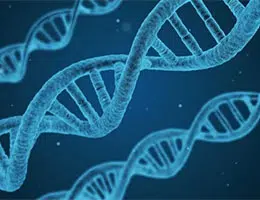 The history of humanity is usually divided into periods known as ages (from the Latin aetas ). Contemporary , for its part, is that linked to the time in which one lives .
The history of humanity is usually divided into periods known as ages (from the Latin aetas ). Contemporary , for its part, is that linked to the time in which one lives .
The Contemporary Age , in this framework, is the historical age that we live in today. Its beginning is generally placed at the end of the 18th century or the beginning of the 19th century .
According to historiography, the first age was the Ancient Age , which succeeded what is known as prehistory . After the Ancient Ages came the Middle Ages and then the Modern Age . The end of this period and the beginning of the Contemporary Age are usually located in the independence of the United States ( 1776 ) or in the French Revolution ( 1789 ).
Among the phenomena that marked the Contemporary Age are the Industrial Revolution , the expansion of capitalism throughout the world, the advance of science , the birth of the most transcendent media and world wars . The consumption of multiple products also became widespread, a fact that allowed the standard of living to improve but, simultaneously, increased social inequality .
To study the Contemporary Age carefully and in detail, it is possible to divide it into two distinct stages:
* the high age : this is the period that began in 1776 and lasted until 1870. Throughout the first years of this stage, very important revolutions took place, which ended around 1815, when a season of relative peace began. ;
* the low age : continues the previous one and extends until 1914. It is characterized by peaceful treatment between countries and the improvement of international communications. At the end of this stage comes one of the most terrible in history, with the First World War.
Among the many scientific discoveries and technological advances that took place during the Contemporary Age, we can mention the following:
* Volta invented the electric battery in the year 1800;
* the first steamboat appeared in 1807;
* Stephenson introduced the steam locomotive in 1826;
* The telephone, one of the most important and revolutionary creations in history , was patented in 1876 by Alexander Graham Bell, its inventor;
* the legendary Thomas Edison invented the electric light bulb in 1879;
* in 1885 the average lifespan increased thanks to the work of Pasteur, who discovered the vaccine against rabies;
* Radioactivity was discovered in 1896 by Bacquerel, a scientist from France;
* In 1899 the consumption of aspirin became popular;
 * DNA began to be investigated in 1900;
* DNA began to be investigated in 1900;
* The Wright brothers made their first air navigation tests in 1903;
* Another milestone that improved quality of life and increased average longevity took place in 1928, when Alexander Fleming discovered penicillin ;
* In 1957, Sputnik I , the first artificial satellite, was sent into space;
* Dr. James Hardy was in charge of the first heart transplant in 1964;
* the CD , one of the most revolutionary inventions of recent times, was presented in 1983;
* the first cloning from a single stem cell, a very controversial experiment, took place in 1997, and Dolly the sheep was born
Never before have human beings enjoyed the quality of life they have in the Contemporary Age. Life expectancy, in fact, already exceeds 71 years globally. However, material progress is very dissimilar depending on the region, with enormous differences existing between the powers (which are part of the so-called first world) and underdeveloped countries.
Looking to the future, the Contemporary Age poses an important problem around sustainability or sustainability since today's society is depleting non-renewable natural resources and damaging the environment .
